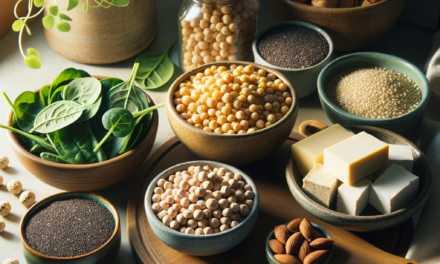Introduction
Embracing a plant-based diet is a powerful step towards improved health and well-being. Snacking can be a delightful and nutritious part of your vegan lifestyle, especially with the bounty of spring produce. Vegan snacks and convenience foods offer a wealth of benefits, including being rich in fiber, vitamins, and minerals, while also being kind to the planet. Let’s explore how to incorporate these tasty treats into your daily routine for an energizing and healthful boost.
Step 1: Understanding Vegan Snacks
Firstly, it’s important to understand what constitutes a vegan snack. A vegan snack is free from all animal products, including dairy, eggs, and honey. Focus on whole foods like fruits, vegetables, nuts, seeds, and whole grains, and when choosing processed convenience foods, always check the label for non-vegan ingredients.
Step 2: Stocking Your Pantry
Keep your pantry and fridge stocked with vegan-friendly snacks that are easy to grab on the go. Some staples include:
- Dried fruits and nuts
- Whole grain crackers and breads
- Nut butters
- Hummus and other bean dips
- Roasted chickpeas or edamame
- Plant-based yogurts and cheeses
Tip: Opt for seasonal produce to enjoy the freshest flavors and nutritional benefits. In spring, snack on berries, citrus fruits, and crisp veggies like snap peas and radishes.
Step 3: Planning and Preparing
Preparation is key to maintaining healthy eating habits. Dedicate time each week to prepare snacks in advance. Wash and cut veggies, portion out nuts and seeds, and prepare dips like guacamole or salsa. Having these ready-to-eat options makes it easier to resist less healthy temptations.
Tip: Use reusable containers to store your snacks. This not only reduces waste but also keeps your snacks fresh and portable.
Step 4: Choosing Convenience Foods Wisely
While whole foods are the cornerstone of a healthy vegan diet, convenience foods can be a great addition when you’re short on time. Look for options with minimal ingredients and low in added sugars and salts. Some good choices are:
- Nakd Fruit & Nut Bar Variety Pack
- URBAN FRUIT Mango, Pineapple & Strawberry Variety Pack
- BEAR Variety Pack Yoyos
- The Happy Snack Company Roasted Chickpeas
Tip: Always read the nutrition label to ensure you’re making a healthy choice. Watch out for hidden non-vegan ingredients such as gelatin, whey, or casein.
Step 5: Snacking Smart
Snacking should be about nourishing your body between meals, not just filling up on empty calories. Pair carbohydrates with proteins or fats for a balanced snack that will keep you satisfied longer. For example, pair apple slices with almond butter or whole grain toast with avocado.
Tip: Listen to your body’s hunger cues. Snack when you’re truly hungry rather than out of boredom or habit.
Common Mistakes to Avoid
- Overlooking the importance of reading labels on convenience foods.
- Forgetting to balance macronutrients for sustained energy.
- Choosing vegan junk food too often, which can be high in calories and low in nutrients.
- Ignoring portion sizes, which can lead to overeating even healthy snacks.
Conclusion
Integrating vegan snacks and convenience foods into your diet is a delicious way to maintain energy levels and support your health goals. By planning ahead and making smart choices, you can enjoy a variety of tasty and nutritious options that align with your wellness journey. Remember, snacking on plant-based foods is not just about what you’re avoiding (animal products), but also about the incredible variety of foods you get to enjoy. So, relish the flavors of spring and the vibrant health that comes with a well-planned vegan diet.
Discover more vegan snack options like the Healthy Snack Gift Box by Noisy Snacks, Veganuary Snack Hamper, Nutruit Gourmet Healthy Snack Box, Angelic Free From Mixed Box Vegan & Gluten Free Cookies, Perkier Variety Box, and Super Munchies Vacuum Cooked Fruit Chips for a delightful variety of plant-based indulgences.
If you’re looking for a wider selection of vegan products, you can explore the vegan snacks category on Amazon.co.uk.










